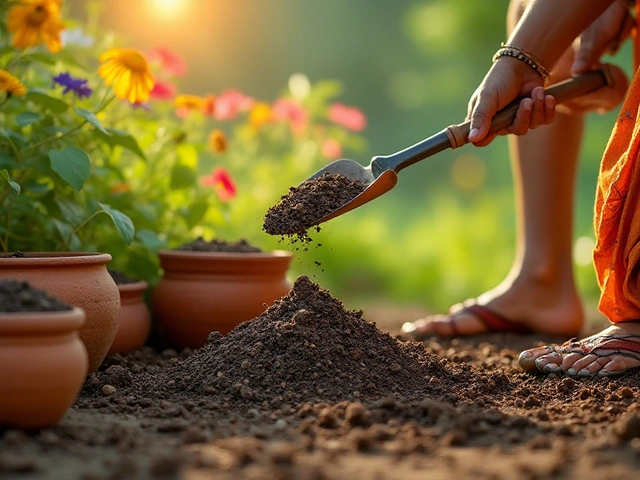Soil Aeration: Easy Ways to Refresh Your Garden Soil
Ever wonder why water sits on the surface or why your vegetables look wilted even after watering? Most of the time it’s not the water – it’s the soil. When soil gets compacted, air and water can’t move through it, and roots start to suffocate. The fix is simple: aerate the soil.
Why Aerate Your Soil?
Air is as important for plant roots as water and nutrients. Aerating creates tiny channels that let oxygen reach the roots, helping them grow stronger and absorb more food. It also improves drainage, so rainwater or irrigation doesn’t pool around the plants. In India’s heavy, clay‑rich soils, compaction is common after the monsoon, so regular aeration keeps the soil loose and lively.
Good aeration reduces the risk of root rot, promotes healthier microbial activity, and makes it easier for fertilizers to work. In short, a well‑aerated bed means bigger, tastier harvests with less water waste.
Simple Ways to Aerate at Home
1. Use a garden fork or aerator spade. Push the fork 6‑8 inches into the soil every 12‑18 inches and give it a gentle wiggle. This creates channels that let air flow. Do this when the soil is moist but not soggy – after a light rain or a few hours of watering works best.
2. Add organic matter. Mix in compost, well‑rotted manure, or leaf mould. These materials break down and naturally loosen the soil over time. For heavy soils, a 2‑inch layer of compost spread over the beds and worked in with a spade does the trick.
3. Try sand or gypsum. Adding coarse sand (about 30% of the topsoil volume) improves texture and drainage. Gypsum works especially well in clay soils by breaking up the particles without changing the pH.
4. Plant cover crops. Fast‑growing legumes like cowpea or clover send roots deep into the ground, creating natural tunnels. When you cut them down, the roots decompose and leave the soil loose.
5. Use a core aerator. If you have a larger lawn, renting a core aerator that pulls out small plugs can be worth it. Leave the plugs on the surface – they break down and return nutrients.
When you aerate, aim for once a year in most Indian gardens. After the monsoon, when the soil is moist but still firm, is the ideal window. If you notice waterlogging or hard, crusty soil, you can repeat the process sooner.
Remember, not all soil amendments are beneficial for every plant. For example, coffee grounds can acidify the soil and may harm plants that dislike high acidity. Stick to proven additives like compost, sand, or gypsum for your aeration routine.
Start with one small patch, see how the plants respond, and expand the practice across your garden. A few minutes of aeration now saves you a lot of trouble later, and your plants will thank you with greener leaves and richer yields.

How to Fix Hard Soil in Your Garden for Healthier Plants
Fixing hard soil in your garden is easier than you think. Discover proven tips, DIY tricks, and why your plants will thank you for it.
About
Gardening
Latest Posts


Sacred Plant in India: Why Tulsi Rules Flower Gardens
By Alden Thorne Jun 22, 2025

Best Months for Flower Blooming in India: Flower Seasons & Tips
By Alden Thorne Jul 27, 2025

Easy Ways to Loosen Compacted Soil Without Tilling
By Alden Thorne Jan 17, 2025
